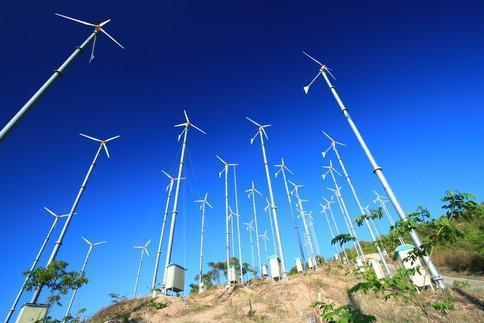
Energy demand in Asia is rising – how to get yours for free. Visit us today at eco.ph!
(Article First Published on: eco-business.com | February 12, 2015)
Driven by rising urbanisation and a growing middle class, demand for energy in Southeast Asia is set to increase by a staggering 80 per cent between 2013 and 2035 - a rise equivalent to the current demand in Japan, estimates the International Energy Agency.
This supports a near tripling of the region’s economy, but one of the biggest challenges facing the region is balancing the need for affordable energy with curbing greenhouse gas emissions, the main cause of climate change.
Clean, renewable sources will have to become a vital part of the energy mix, even as reliance on oil imports rises across the region. Bloomberg New Energy Finance expects that US$2.5 trillion will be spent on renewable technologies in Asia Pacific by 2030 – a hole that governments alone cannot fill.
Experts say the private sector holds the key to this funding shortfall. The good news is, there already is growing interest from the private sector to invest in the region’s clean energy sector.
These include private equity funds, companies and increasingly, family offices, which are gradually taking to the concept of sustainable investing.
Sustainable investing refers to an investment approach that seeks financial return while emphasizing social good. This usually involves promoting environmental stewardship, consumer protection, human rights, and diversity, to name a few.
“Clean energy is definitely a large trend in sustainable investing and we really see that happening across the region,” says Jessica Robinson, chief executive of the Association for Sustainable & Responsible Investment in Asia (ASrIA).
In a report called “Asia Sustainable Investment Review”, published last December, ASrIA studied sustainable investment strategies and practices by investors in Asia.
“We are seeing a lot of positive trends, and one is that governments are trying to bringing in private capital to co-share not only the capital but the returns and risks,” Robinson adds.
Potential investors are now more comfortable with the risks involved in the building and running of power assets because returns have been attractive and policy support is gradually increasing albeit the level of support varies across the region.
Furthermore, an ecoystem of companies that provide services and hardware in clean energy is emerging. All these factors are contributing to the growing awareness among private investors that the clean energy industry is viable.
Nonetheless, they still need to be nudged to invest, mainly by governments, and a good way to do that is to co-share risks.
“Companies hate uncertainty… (so) this is where policy support comes in,” Robinson says.
For example, governments can back a fund specialising in clean and renewable energy and match the private-sector contributions, which Indonesia has done. They can also help with valuing projects more effectively by putting a price on carbon, she adds.
“More bankers than engineers”
In the meantime, the potential for the private sector is in Southeast Asia is huge.
“There is more money wanting to go into projects than there are projects,” says Michael Quah, professor of chemical and biomolecular engineering at the National University of Singapore (NUS).
“When you go to any conference on financing, 90 percent of them are bankers and money types. The rest are engineers,” says the professor, who is also the director of the NUS Energy Office.
Berkeley Energy, Armstrong Asset Management and Equis Funds Group are among the private groups that started investing in renewable energy projects in the region in the past decade.
U.K.’s Berkeley Energy’s Renewable Energy Asia Fund has stakes in small hydro, wind, geothermal, solar, landfill gas and biomass projects in Asian developing markets, focusing on the Philippines and India.
Armstrong’s Southeast Asia Clean Energy Fund, a private-equity fund based in Singapore, manages US$164 million of investments in utility-scale renewable energy and resource efficiency projects in Southeast Asia.
Armstrong’s chief executive officer Andrew Affleck said the fund’s early participation in the sector has generated goodwill among governments in the region.
“There are compelling reasons for private finance to invest in the renewable energy sector – and the subsequent success of companies like us should eventually encourage broader participation from large private sector institutions,” Armstrong told Eco-Business.
“New initiatives are being put in place to increase such participation,” he adds. For example, governments are reaching out to private companies to collaborate on public-private partnerships and working on increasing tax incentives for green projects. “
Singapore-based Equis Funds Group, meanwhile, invests in Soleq, a solar utility also based in the city that owns and operates 70 percent of 10 solar facilities - totalling 91MW - in Thailand.
Soleq is also financing the construction of two projects in Philippines totalling 50MW, with the rights to acquire and fund an additional 150MW of solar projects.
There are compelling reasons for private finance to invest in the renewable energy sector – and subsequent investment success of people like us should eventually encourage broader participation from large private sector institutions.
Andrew Affleck, chief executive officer, Armstrong Asset Management
A lot of work is also being done by development finance institutions such as International Finance Corporation (IFC), The Netherlands Development Finance Company (FMO), Germany Investment and Development Corporation (DEG), Proparco, The Global Energy Efficiency and Renewable Energy Fund (GEEREF), Asian Development Bank (ADB) and Obviam in the region.
They invest in private funds such as Armstrong’s as well as directly in projects, providing both debt and equity.
The name is Bond, Green Bond
While the efforts by the private sector to invest in clean energy projects have been promising, far more is needed in terms of fund-raising for projects in the region.
One innovative funding stream that could potentially make a huge difference is green bonds.
Companies that want to build, for instance, wind or solar farms, issue these bonds, which promise a certain return over the life of the project. Investors fund them by buying the bonds.
Currently, many investors are institutions such as private companies, commercial banks, insurance firms, central banks and other government bodies, asset managers, and pension funds.
For these private-sector investors, such credit-worthy fixed income opportunities may be attractive as they provide steady returns over five to 20 years.
In recent years, green bonds have raised money for clean energy, mass transit, and other low-carbon projects that help countries adapt to and mitigate climate change.
Since the first green bond was developed by the World Bank and Skandinaviska Enskilda Banken (SEB) in 2007, the global market for such bonds has grown rapidly at a compound annual rate of more than 50 percent, according to S&P Dow Jones Indices, which runs the S&P Green Bond Index consisting of 150 such issuances.
In Asia, the market is tiny but growing, says Julia Kochetygova, senior director of global equities and strategy, S&P Dow Jones Indices, in a January 2015 report “Climate Change, Green Bonds and Index Investing: The New Frontier”.
“If the current trends continue, (the global green bond market) could grow from USD$150 billion to USD$200 billion over the next three to five years, thus providing an array of investment opportunities to long-term fixed income investors,” she writes in the report.
Last July, Taiwan’s Advanced Semiconductor Engineering became the first Asian company to sell green bonds, issuing US$300 million of three-year bonds.
They received more than US$2 billion in orders, reflecting the huge demand for such products and paving the way for more companies in the region follow in its footsteps.
Institutions that are advocating green bonds include ADB’s Credit Guarantee and Investment Facility (CGIF), which provides credit guarantees to companies that want to issue local-currency bonds in Southeast Asia.
The CGIF is focusing on green bonds this year and hopes to lead the way in the development of green bond in the region, CGIF’s chief executive Kiyoshi Nishimura told Global Capital.
The agency knows there are huge green investment needs in Asean countries, especially in renewable energy and energy-efficiency areas, and there is almost no precedent for green bonds in Asia, Global Capital reported. That is why it is focusing on green bonds.
“Most likely, our initial projects for green bonds will be for renewable energy or energy efficient investments,” Nishimura says. “We are already working on transactions involving renewable energy investments in the Philippines (geothermal) and Laos (hydro) and exploring if they can be structured as green bonds.”
Overcoming Challenges
Despite the rosy outlook for green energy projects in Southeast Asia, challenges do exist, and can be as simple as the lack of communication between the public and private sectors.
“I think an issue is there’s not enough engagement between the private sector and government. So there’s a big question on where the opportunities are and where the private sector can help,” says ASrIA’s Robinson.
Affleck agrees, but adds that it’s “getting better in some countries.”
The Philippines Energy Regulatory Commission, for example, now holds timely public stakeholder consultations to address problems, he says. “And they do try to solve them.”
In addition, supply chain issues such as long waiting times for equipment and spare parts, weak support and







